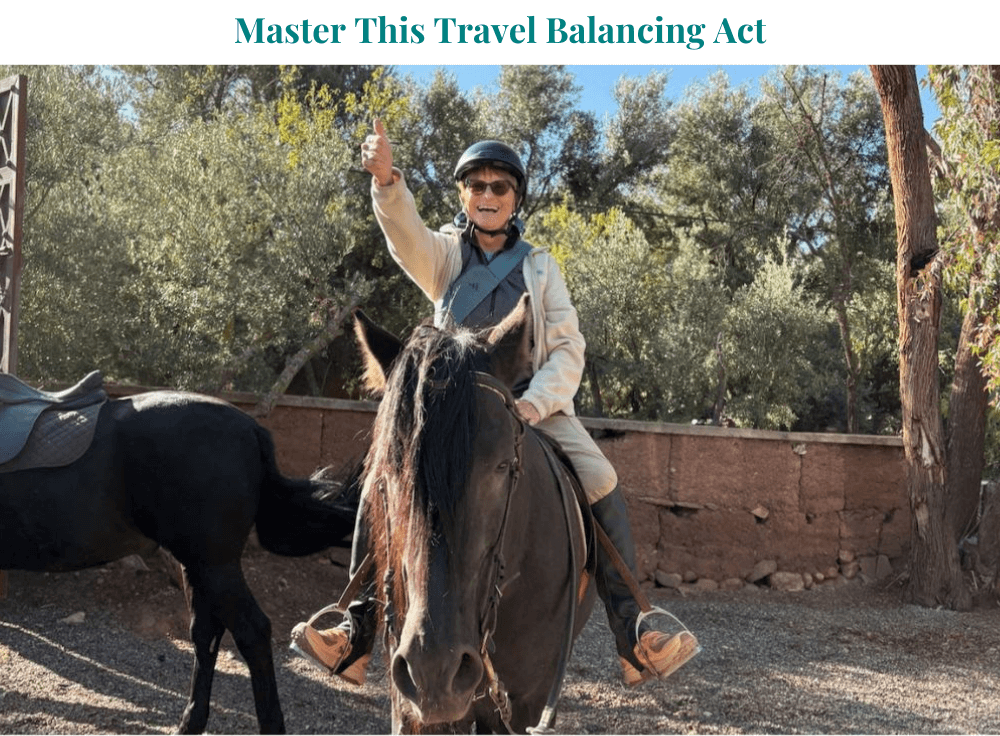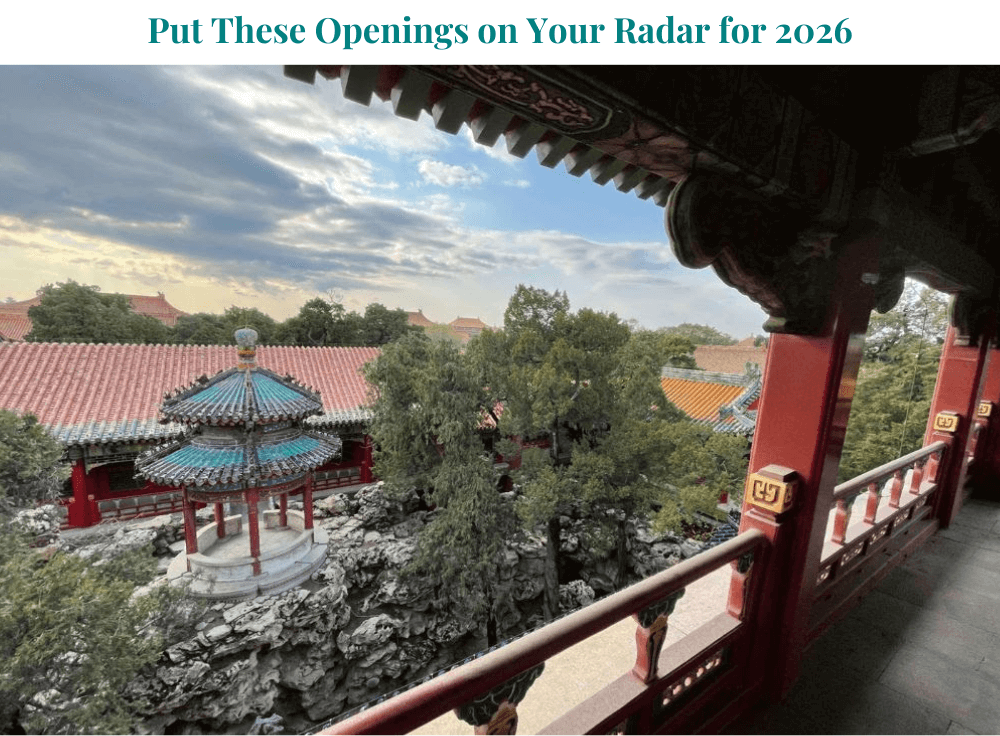Basque Country Insider’s Guide: Unique Traditions, Delicious Food
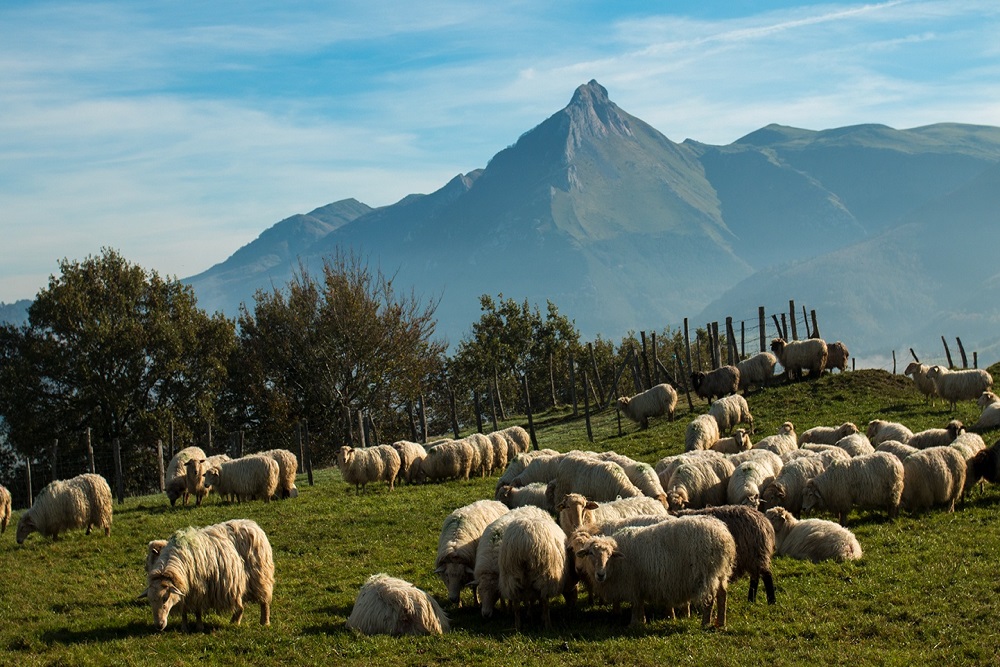 In the Basque Highlands, even the sheep get a spectacular view. Photos: Tours For You
In the Basque Highlands, even the sheep get a spectacular view. Photos: Tours For You
The insider advice on this page is from one of Wendy’s Trusted Travel Experts for Spain: Pablo Calvo of Tours for You.
Pablo was born in Spain, studied art history at university there, and worked in museums until he realized that he wanted to help travelers craft their entire trips, not just a single stop along the way. He has explored all 17 regions of Spain and maintains a network of connections that ensures he can help reserve tables at the most sought-after restaurants in San Sebastián, arrange private Flamenco lessons in Madrid, or get you into the hidden-gem wineries in La Rioja. Rather than the fanciest hotels, Pablo prefers the charming, one-of-a-kind four-stars with a great location—and, in the countryside, a location that’s easy to find in a rental car. Pablo covers mainland Spain and Mallorca only, so if you’re headed to other Balearic Islands (e.g., Ibiza) or the Canary Islands, write to Ask Wendy.
Where to Stay and Eat
Best bang-for-your-buck hotel
Hotel Villa Favorita, an adults-only boutique hotel housed in a 19th-century villa, has charming views over one of Spain’s most beautiful seaside promenades, La Concha Beach in San Sebastián. It’s also home to the two-Michelin-starred Amelia Restaurant, helmed by Chef Paulo Airaudo. Definitely splurge for one of the panoramic seaview rooms or suites.
Best-value splurge hotels
In San Sebastián: The Hotel Maria Cristina is the architectural gem of the city, and it’s where the stars stay when they are in town for the prestigious international film festival. It’s worth paying more for a view over the Urumea River.
In the countryside: Hotel Iturregi is a fabulous place to relax in summer (it’s closed in winter); in fact, you may well run into Spanish celebrities looking for a bit of peace and quiet. The hotel has just six rooms and two suites (each individually designed), so the staff is at your beck and call. There is no restaurant, but they do serve a nice breakfast and offer room service in the evening.
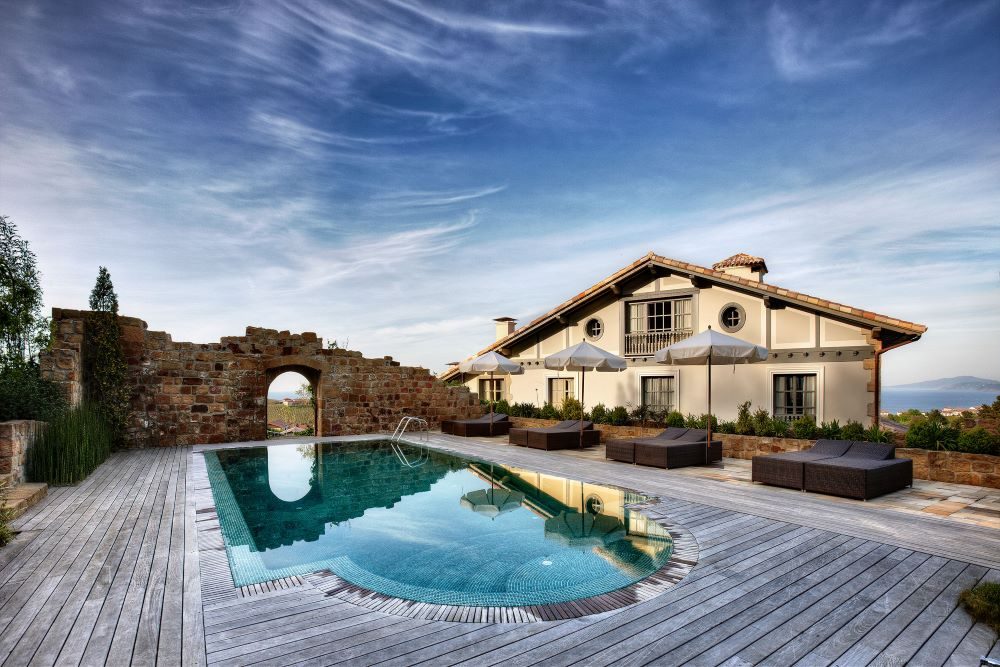
Rub shoulders with Spanish celebrities at Hotel Iturregi. Photo: Hotel Iturregi
In Bilbao: The modern, five-star The Artist—Grand Hotel of Art is walking distance from the city center. Book one of the rooms that looks out over the adjacent Guggenheim Museum, with its gorgeous, swooping curves. But you don’t even have to go that far to enjoy contemporary art: There are impressive temporary and permanent collections within the hotel.
Restaurants the locals love
In Bilbao: Casa Rufo first opened as a delicatessen in 1955, adding a restaurant in 1995. It’s not fancy, but it’s authentic Bilbao down to its bones. Try the egg croquettes, which are crunchy on the outside with a soft interior.
In San Sebastián: Juanito Kojua is another traditional place, this one previously a wine shop before becoming a restaurant in the 1950s. They do excellent versions of the famous black beans from the village of Tolosa, about 20 miles inland, and hake kokotxas, a Basque delicacy using the underside of the fish’s jaw. Ganbara is a local favorite for high-quality pintxos. If you haven’t filled up on pintxos, its cozy downstairs restaurant offers a full menu with excellent grilled options.
Dishes to try
Bacalao al Pil-Pil, while well known all over Spain, is a traditional Basque codfish preparation with a rich, delicious olive oil-based sauce. You’ll find it in every local restaurant in central Bilbao, San Sebastián, and Vitoria.
Marmitako is a traditional Basque stew. The main ingredient is albacore, always fresh from the ship, which is cooked over low heat with potatoes, chorizo peppers, chopped tomatoes, onion, and garlic. You can find the best versions of this dish in Hondarribia, Deba, Mutriku, Blbao, and San Sebastián.
Txuletón is a Basque T-bone steak, served alongside cider in a traditional cider house (where you may have to eat family-style from shared serving dishes while standing up). There is usually just one set menu that includes the steak, some bread and cheese, maybe a codfish omelet and green peppers, nuts as a dessert, and cider from the barrel—but you won’t go home hungry. Locals come here to celebrate special occasions. The best cider houses are located on the outskirts of San Sebastián; try Petritegui, Alorrenea, and Iretza.
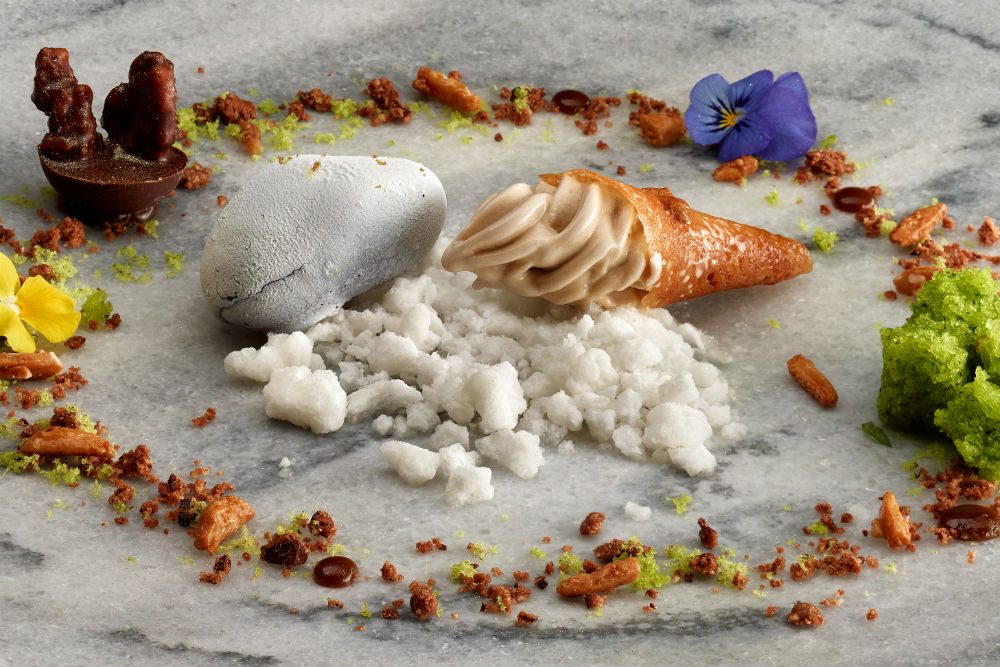
Plates at Martín Berasategui resemble art, like this dessert of Pacari cocoa stones and iced flower tea. Photo: Martín Berasategui
Meals worth the splurge
The tasting menu at one of these Michelin-starred restaurants:
Asador Etxebarri, in the countryside 25 miles from Bilbao, where absolutely every dish spends time on the grill. The single set menu is conceived the same day based on the freshest products available that morning. The cattle are raised on nearby farms, the vegetables come from the surrounding lands, and the shellfish arrives fresh; the chef also breeds Italian buffaloes, whose milk he uses for his mozzarella.
Mugaritz, just outside San Sebastián, has steered away from the fusion techniques that are so popular at high-end restaurants these days. The restaurant is surrounded by trees, and the dishes pay homage to the land and the season’s best products.
Martín Berasategui, also outside San Sebastián, elevates local ingredients and simple recipes into avant-garde classics. Chef Berasategui owns 12 Michelin stars in total, three of which belong to this eponymous restaurant; dining here is like tasting art.
Night spots
If you want to dance, check out hip GU, a cocktail bar/nightclub near San Sebastian’s port. Go late, as dancing doesn’t start until after midnight—though sunsets are pretty spectacular, too. For craft cocktails, try Sybaris, Arraun, or the Oteiza terrace at the the Akelarre Hotel in Igueldo.
What to See and Do
Most underrated place
Hike the coastline, ancient paths, and vineyards around San Sebastián to truly experience the Basque region and its way of life. Go west toward Getaria village or east toward Pasaia Bay. Pablo can set you up with a local who will tell you about the mountains, the coastal villages, and the local wine—and make plenty of stops for pintxos.
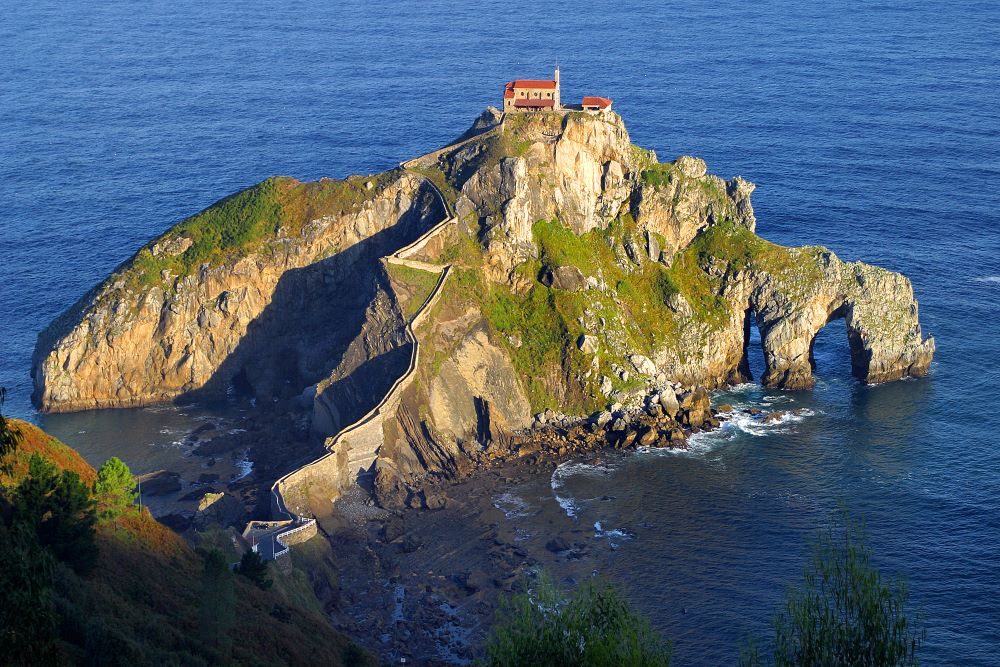
The island of San Juan de Gaztelugatxe stood in for “Dragonstone” in Game of Thrones. Photo: Dep Turismo Comercio Consumo Gobierno Vasco
Most overrated places
Bermeo, which many will say is the Basque country’s most charming fishing village. Pablo prefers the more authentic atmosphere in Ondarroa or Pasaia.
The island of San Juan de Gaztelugatxe, which crowds descended on after it stood in for “Dragonstone” in Game of Thrones. Beware: Climbing those 241 steps—which are sometimes incredibly slippery because of rain or fog, and packed with dozens of groups going up and down—can be tough. All but the most diehard fans will be just as happy taking a photo from a distance and enjoying the seaside nearby.
Cheap thrill
A crossing of the Nervion River on the Vizcaya Bridge, a UNESCO World Heritage Site and the world’s oldest transporter bridge (it carries people and cars across the river in a gondola, so as not to disrupt ship traffic). For about four euros you can cross the river via this industrial work of art; 12 to 14 euros gets you an audio guide and access to the top platform.
Hidden gems
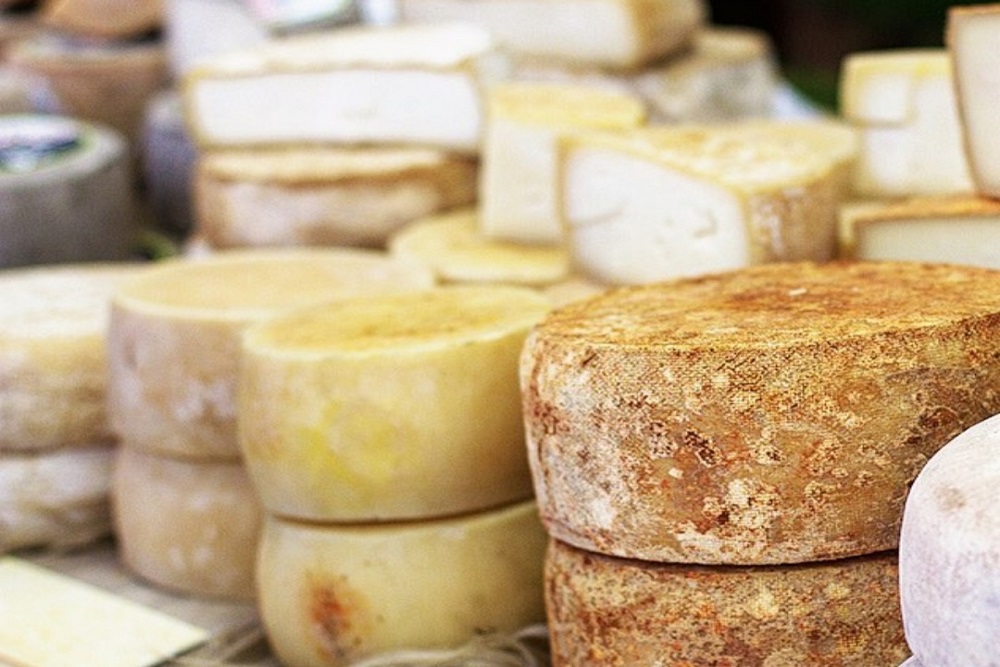
Local cheese in Goierri, in the Basque Highlands. Photos: Tours For You
Goierri is a charming Basque village; Pablo can combine a short hike and lunch here with a visit to local cheese maker preserving traditional artisanal methods.
The village of Pasaia, near San Sebastián, is a seaside charmer with cobbled streets and medieval homes. Pablo can arrange for you to take a three-hour hike with a local guide along the coast from San Sebastián to Pasaia, visit the village’s boat factory to learn how Basque whalers have lived and worked since the 16th century, or spend the afternoon with a chef at his restaurant preparing the region’s most famous fish dishes.
In Álava province, visit the Añana Salt Valley to learn firsthand how this “white gold” is harvested today, and what processes were used to gather this precious product as many as 6,500 years ago. The landscape is truly stunning.
Bragging rights
While you’re touring La Rioja’s famous wineries, Pablo can arrange for you to have a farm-to-table lunch, paired with fine wines, at an underground cellar in a quaint, medieval village. The cave is built into a hill, just beneath a church and a 12th-century castle, so you’ll also enjoy a panoramic view of the valley from outside the cellar.
Pablo has connections to some of the private gastronomic societies that play an enormously important role in San Sebastián’s social life—and which you can only visit when invited by a member. Pablo can even arrange for a cooking class in one of the societies.
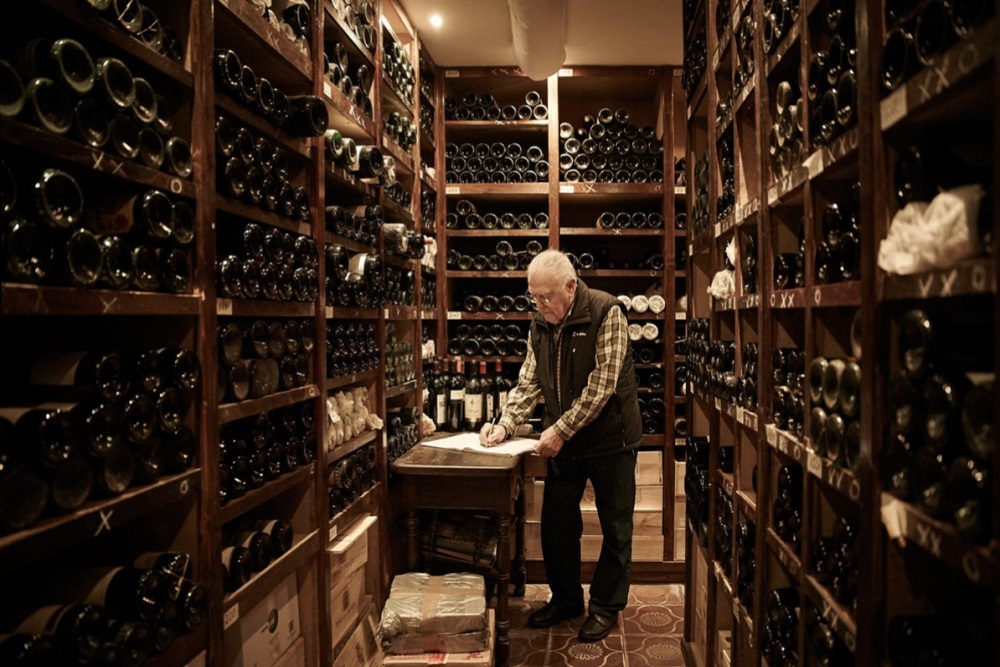
Txomin Rekondo in the wine cellar of his eponymous restaurant in San Sebastián. Photo: Rekondo
For wine lovers, Pablo will arrange for a private visit to the wine cellar at Rekondo, considered one of the best restaurant wine cellars in the world. After Rekondo’s sommelier guides you through their vast and important collection of wine and champagne, cap your visit with the chef’s tasting menu and wine pairing.
Prime picnic spot
Pick out fresh Basque products at the Bretxa food market, then enjoy a lovely picnic on Santa Clara Island, located in the middle of San Sebastián’s bay and accessible via a regularly scheduled boat from the mainland.
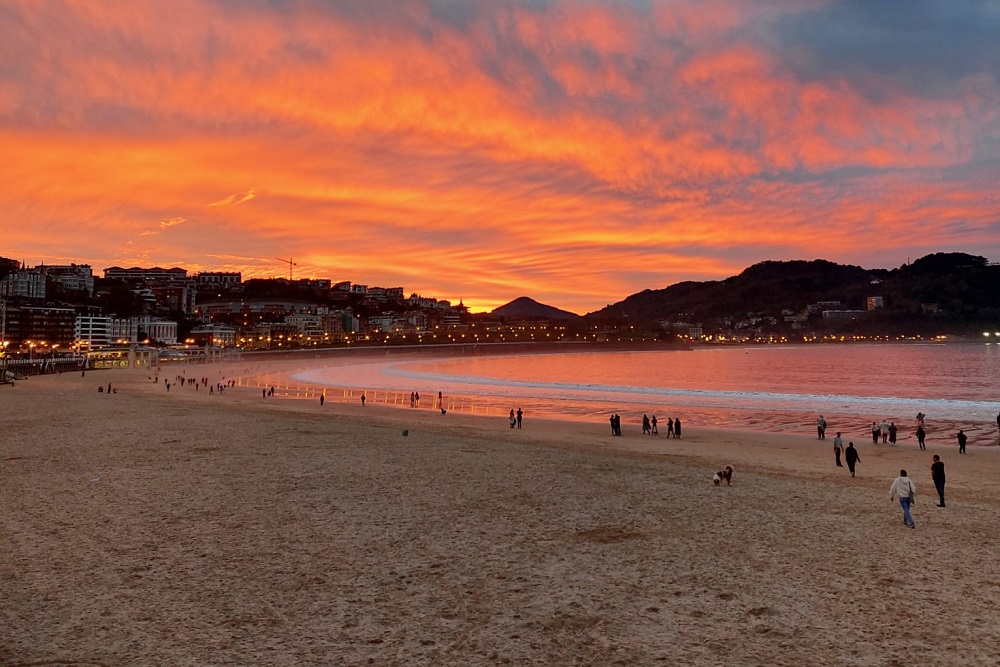
Sunset over Concha beach, San Sebastián. Photo: Pablo Calvo
How to spend a Sunday
Spaniards usually reserve the morning for chores, sports, or mass; around lunchtime, they enjoy a glass of vermouth, paired with cañas and tapas, among family or friends.
In San Sebastián: Walk along lively Concha beach, enjoying an ice cream as the locals do. Here you can also take a funicular up Mount Igueldo for wonderful views.
In Bilbao: Walk to the flea market in Plaza Nueva and stop somewhere in the Old Town to enjoy a plate of rabas (calamari), then ride the Artxanda funicular for the most beautiful views of the city.
Best Times to Go
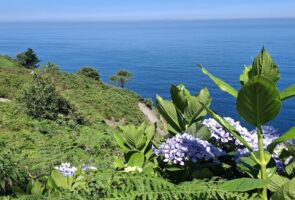
June and September (except the last ten days—see below) offer great weather and relative availability of charming places to stay, both along the coast and inland. September is the ideal time to visit the Rioja Alavesa wine region (in the south of Basque country), when the vineyards are colorful and heavy with fruit.
Worst Times to Go
December through February, when it’s cold.
The first half of July, when it’s too hot and the San Fermin festival in Pamplona draws crowds.
The last ten days of September, when the International Film Festival takes place, hotel availability is tight, and rates are extremely high.
Biggest Rookie Mistake
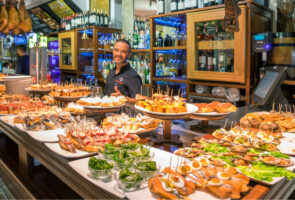
Assuming that pintxos are akin to tapas. When you ask for a beer or wine in other parts of Spain, that usually includes a small bite, or tapa; not in the Basque Country. Pintxos are more elaborate (but still small) dishes, and while you can usually serve yourself directly from the bar, you’ll be charged for what you eat.
Can't-Miss Photo Ops
Capture some of the region’s world-renowned art: In San Sebastián, check out The Comb of the Wind, by Eduardo Chillida (see “Hidden gems”) at sunset. In Bilbao, head to Puppy (the flowery dog) and Maman (a giant spider)—both outside the Guggenheim Museum—early in the morning.
Scam to Avoid
Watch for wildly overpriced pintxos in the main areas of Bilbao and San Sebastián (see “Biggest Rookie Mistake”).
The Souvenir
The Basque beret, known as a txapela. This was the traditional headgear of Aragonese and Navarrian shepherds from the Ansó and Roncal valleys of the Pyrenees. You can find high-quality Basque berets at Casa Ponsol in San Sebastián, or at Sombreros Gorstiaga in Bilbao; both are workshops with more than 100 years of history.
Must-Have Apps
Weather is unpredictable in the Basque country; Euskalmet is the best place to find reliable forecasts.
The Euskadi Turismo app is an excellent resource with more than 1,000 recommended places to visit in the Basque region.
Billon Bizi is helpful for those biking around Bilbao independently.
Tipping Tips
Tipping is not as common in Spain as it is in the U.S., but if you’d like to commend excellent service, 5 to 10 percent—left in cash—will be greatly appreciated.
Don't Forget to Pack
A raincoat, which could come in handy at any time of year.




